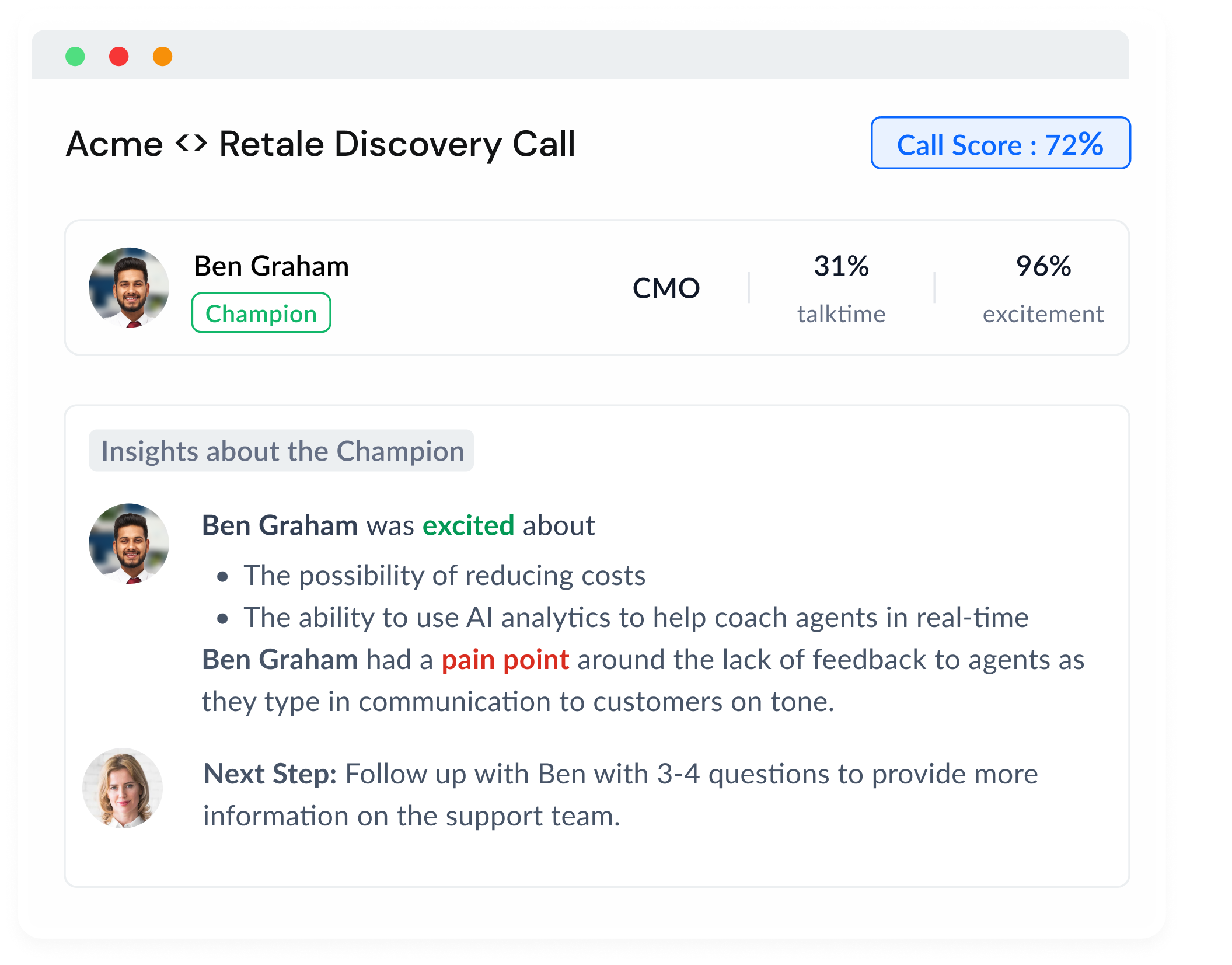We all know the feeling. That sinking sensation when you hear the words, "I'm just looking," or "Let me think about it." It's the sales equivalent of a cold shower, an icy blast that sends you scrambling for a new strategy, a new approach. If only there was a better way to connect with customers, a way to transform those icy rejections into warm embraces. Well, folks, fasten your seatbelts because that's exactly where we're heading.
Welcome to the world of consultative selling, a world where you're not just a salesperson but a trusted advisor, a confidant, a problem solver. In this world, you're not pushing products, you're creating value. You're not closing deals, you're opening relationships. Sounds exciting, right? But what exactly is consultative selling? And more importantly, how can you master it?
In the following lines, we'll unravel the secrets of consultative selling, exploring why it's such a big deal, how it works, and how you can leverage it to transform your sales game. We'll also introduce you to a secret weapon that can supercharge your consultative selling skills. But no spoilers yet! Let's take it step by step.
What is Consultative Selling?
In the simplest terms, consultative selling is a sales approach that prioritizes relationships and open dialogue to identify and provide solutions to a customer's needs. It's not about just pushing a product; it's about understanding the customer's situation, their pain points, and then aligning your product or service as a solution to their problem.
To paint a clearer picture, let's imagine a typical salesperson as a marathon runner. They're determined, focused, and their eyes are locked on one thing: the finish line (or in their case, the sale). Now, imagine a consultative salesperson as a friendly tour guide. They're still determined and focused, but instead of rushing you to the finish line, they're walking with you, pointing out interesting sights, and making sure you're having a good time.
In essence, consultative selling is a more personalized, customer-centric approach to selling. It's about establishing trust, asking the right questions, actively listening, and then providing a solution that fits the customer's needs like a glove.
Key Principles of Consultative Selling
Consultative selling sounds great, right? But how do you actually do it? Well, it all boils down to a few key principles.
Active Listening
First things first, let's talk about active listening. Now, you might be thinking, "I listen to my customers all the time. I've got this one covered." But active listening isn't just about hearing what your customers are saying—it's about truly understanding them.
When you're actively listening, you're fully engaged in the conversation. You're not just waiting for your turn to speak—you're paying attention to every detail, from the words they're using to the tone of their voice. You're not just listening to respond—you're listening to understand.
Asking the Right Questions
Next up, we have the art of asking the right questions. This is where your inner detective comes into play. Your goal is to uncover your customer's needs, challenges, and goals. And to do that, you need to ask insightful, thought-provoking questions.
Open-ended Questions
Start with open-ended questions. These are questions that can't be answered with a simple 'yes' or 'no'. They encourage your customers to share more about their situation, giving you valuable insights into their needs and challenges.
Probing Questions
Next, use probing questions to dig deeper. These are follow-up questions that help you uncover more details about a specific topic. For example, if your customer mentions a challenge they're facing, you could ask, "Can you tell me more about that challenge? How is it affecting your business?"
Clarifying Questions
Finally, use clarifying questions to make sure you've fully understood what your customer is saying. These could be as simple as, "So, if I understand correctly, you're saying that…"
Positioning Value Over Price
In consultative selling, it's all about value, not price. Your goal is to show your customers how your product or service can solve their problems and help them achieve their goals.
Instead of focusing on the price of your product, focus on the value it provides. For example, instead of saying, "Our product costs $100," you could say, "Our product can help you save 10 hours a week, which could lead to an increase in productivity and revenue."
Offering Personalized Solutions
Lastly, consultative selling is all about personalization. Remember, you're not just selling a product—you're providing a solution. And to do that, you need to tailor your approach to each customer's unique needs and challenges.
This means taking the time to understand your customer's situation and then presenting your product or service in a way that directly addresses their needs. It's not about what your product does—it's about what it can do for them.
So, now that we've covered the key principles of consultative selling, let's move on to the process.
The Art of Consultative Selling
Consultative selling might sound complicated, but it can be broken down into a few key steps: pre-call planning, conducting the sales meeting, post-meeting follow-up, and building long-term relationships. Let's explore each of these in more detail.
Pre-call Planning
You know the saying, "Fail to prepare, prepare to fail"? It couldn't be more accurate when it comes to consultative selling. The first step in the consultative selling process is pre-call research and preparation. This is where you gather as much information as you can about your customer. What are their needs? What challenges are they facing? What are their goals? These are the questions you'll want to answer before you even get on the call. Use tools like LinkedIn, Google, and your CRM to gather this information.
Remember, the more you know about your customer, the better you'll be able to tailor your approach to their unique needs.
Conducting the Sales Meeting
Next up, we have the sales meeting. This is where the magic happens. But remember, this isn't your typical sales pitch—it's a conversation.
Identifying Customer's Pain Points
Start by identifying your customer's pain points. Use the information you gathered during your pre-call research to guide this conversation. Ask open-ended questions to get your customer talking about their challenges, and then use probing questions to dig deeper.
Discussing Potential Solutions
Once you've identified your customer's pain points, it's time to discuss potential solutions. But remember, this isn't about pushing your product—it's about providing value.
Show your customer how your product or service can solve their problems. Use stories, case studies, and testimonials to illustrate your points. Make it clear how your solution can help them achieve their goals.
Post-meeting Follow Up
After the meeting, don't just disappear—follow up. Send a thank-you note, summarize the key points from your conversation, and outline the next steps. This shows your customer that you're committed to helping them succeed.
Building Long-term Relationships
Finally, remember that consultative selling isn't just about making a sale—it's about building a long-term relationship. Keep in touch with your customer, even after the sale. Check in regularly to see how they're doing, offer support, and look for opportunities to provide additional value.
The Future of Consultative Selling with AI
In today's digital age, the face of sales is rapidly evolving, and AI is playing a pivotal role in this transformation. Artificial Intelligence, with its ability to process vast amounts of data and provide actionable insights, is becoming an invaluable tool for salespeople, especially for those practicing consultative selling.

Enhancing Understanding of Customer Needs
One of the key aspects of consultative selling is understanding the customer's needs. AI can take this understanding to a new level. With its ability to analyze vast amounts of data, AI can provide in-depth insights into customers' behavior, preferences, and needs. For instance, AI can analyze a customer's past purchases, online behavior, and social media activity to identify trends and patterns, helping salespeople better understand their customers' needs and preferences.
Predictive Analytics
Predictive analytics, a branch of AI, can also play a crucial role in consultative selling. By analyzing historical data, AI can make predictions about future customer behavior. This can help salespeople identify potential customer needs before the customer even realizes they have them, allowing for a more proactive approach to selling.
AI-Powered Communication Analysis
Another exciting development is the use of AI in communication analysis. Tools like Sybill can analyze sales calls in real time, identifying crucial verbal and non-verbal cues that a salesperson might miss. This information can provide valuable insights into the customer's mindset, helping salespeople tailor their approach accordingly.
Moreover, Sybill's ability to analyze every aspect of a sales call can help salespeople improve their communication skills. By providing feedback on factors like speech rate, tone, and language, AI can help salespeople communicate more effectively and build stronger relationships with their customers.
AI in Sales Training and Development
AI is also revolutionizing sales training and development. AI-powered tools can provide personalized training programs, analyze performance, and provide actionable feedback. This can help salespeople continually improve their consultative selling skills, leading to more successful sales outcomes.
In conclusion, AI is not just a tool for consultative selling—it's a game-changer. It's enhancing every aspect of the sales process, from understanding customer needs to communication analysis, predictive analytics, and training. As AI technology continues to evolve, we can expect its role in consultative selling to grow even further.
Embracing AI in consultative selling isn't just about staying ahead of the curve—it's about providing the best possible service to your customers. And with tools like Sybill, mastering the art of consultative selling has never been easier.















.png)





